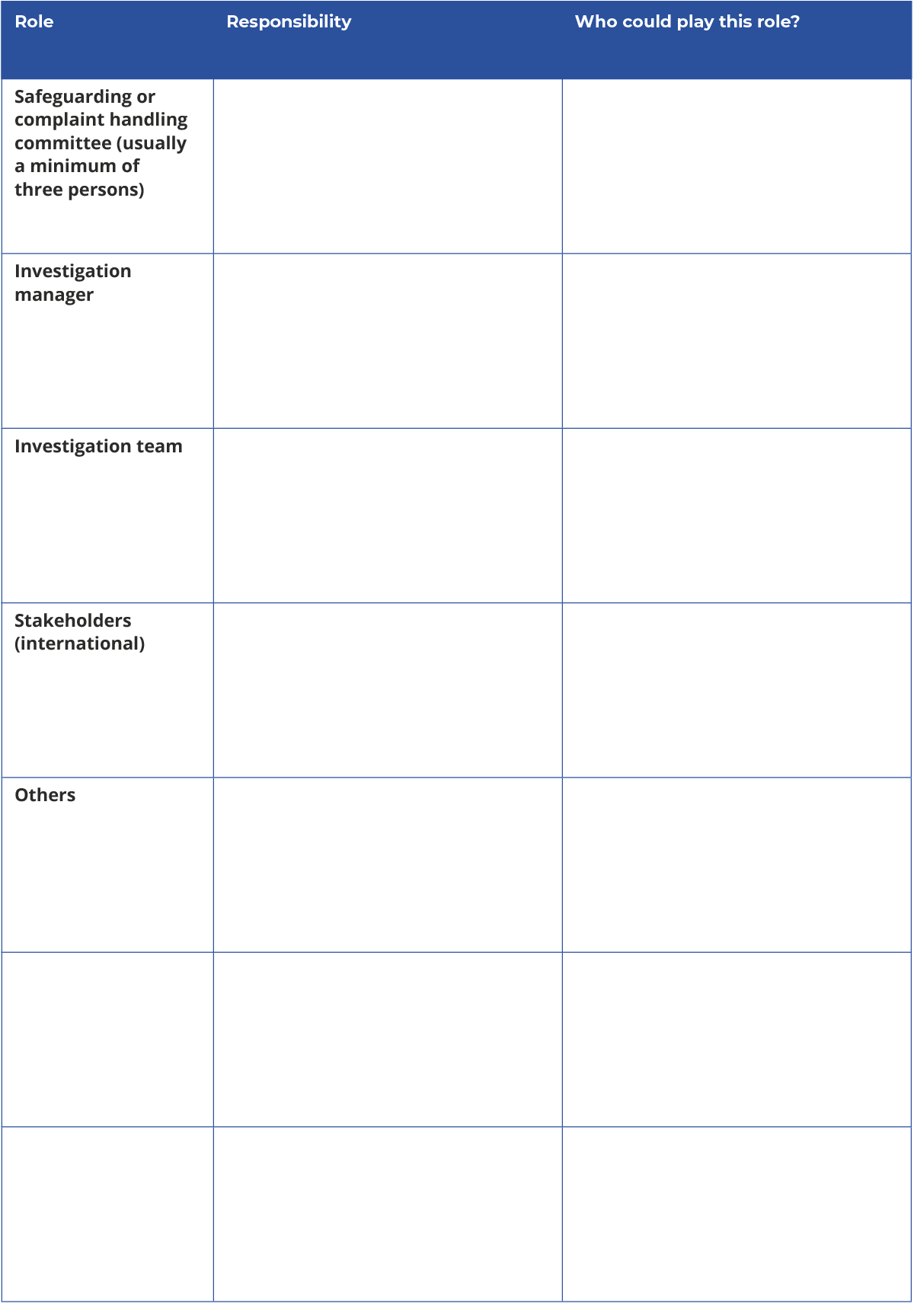Unit 3: Reporting, responding and investigations
3.7 Roles and responsibilities
When undertaking internal administrative investigations, it’s important to be clear about roles and responsibilities. This next activity is an opportunity to make sure you know where responsibilities lie in your organisation – or clarify them if you are unsure.
|
Activity 3.4 Who is responsible? Look at the template below. Consider who has responsibility for the various roles listed and who could fill this role. You can add roles where relevant. Use this writable PDF version of the template which you can type into and then save it and/or print it.
(Adapted from CHS Alliance Management Investigation Checklist) |
|
Activity 3.5 Case study – next steps Microaggression is a term used for commonplace daily verbal, behavioural or environmental slights, whether intentional or unintentional, that communicate hostile, derogatory, or negative attitudes toward stigmatised or culturally marginalised groups. Read the case study of a workplace situation below and consider the questions below noting your responses in your learning journal. Case study Sally, the only female manager in the programmes team, reports to the Safeguarding Lead that she experiences microaggressions from her line manager Juan, the Programmes Director. She says that every time she highlights any safety or programmatic concerns, he chooses to give her angry looks or ignores what she is saying, choosing instead to inform her that some team members have complained to him about her. He just wants everyone to get on with everyone. He is a high-profile senior staff member who is often seen as the public face of the organisation and is very well-liked by others. Sally feels undermined and disrespected in her role – she believes that she is being pushed out of the organisation because she is a woman of colour.
|
![]()
Want to find out more?
For more information on this topic, follow the links below:
GSIF Managing Investigations – Tool 1: Case studies for Leaders

